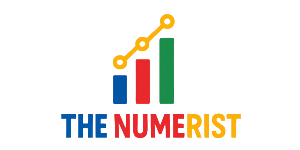BLOG
Understanding the ∴ Symbol in Math

Introduction: What the ∴ Symbol Represents in Mathematical Thinking
The therefore symbol in math, represented as ∴, is a compact and elegant way to denote the conclusion of a logical argument or a final step in a mathematical proof. Though it may appear simple, this triangular symbol holds a significant place in the language of mathematics and logic, offering a visual shorthand that encapsulates reasoning, deduction, and clarity. Used to signify that what follows is a result of what precedes it, the therefore symbol has played an important role in communicating the logical flow within mathematical statements.

The Visual and Logical Meaning Behind ∴
The ∴ symbol is made up of three dots arranged in a triangle. This configuration, while minimalistic, carries the weight of deductive reasoning. In symbolic logic and mathematical writing, it tells the reader that a conclusion has been reached based on previously established premises.
In the broader context of logical notation, this symbol is used to express a deductive conclusion. For example, if one were to write
Historical Background: Origins of the Therefore Symbol
The use of ∴ dates back to the 17th century and has roots in Euclidean geometry and early symbolic logic. Philosophers and mathematicians, such as Johann Rahn, began integrating symbolic shorthand into mathematical notation to enhance clarity and brevity in written arguments. Over time, this symbol gained acceptance as a universally recognized way to mark conclusions in formal reasoning.
In classical mathematical proofs, the therefore symbol helped mathematicians avoid lengthy textual explanations by creating a more visual flow of logic. While it is not as common in formal publications today, its educational value and simplicity still make it a staple in math classrooms and informal settings.
The Role of ∴ in Mathematical Proofs and Reasoning
Proofs are fundamental to the discipline of mathematics, and the ∴ symbol often appears as part of a chain of logical deductions. For example, in geometric reasoning, once a set of properties is proven—like the equality of angles or congruence of sides—the therefore symbol is used before the final conclusion to signify that the argument has reached its end.
In symbolic logic, which underpins much of modern computing and mathematical philosophy, symbols like ∴ help in expressing complex reasoning patterns more efficiently. They assist in differentiating between premises and conclusions, allowing readers to follow the logic step-by-step.
Moreover, when comparing the therefore symbol with others such as → (implies) or ⇒ (logical implication), it’s important to understand the nuance. While all convey progression or causation, ∴ emphasizes the conclusion rather than the process.
Typing and Writing the Therefore Symbol
In today’s digital age, using special characters like ∴ requires a bit of technical knowledge. On Windows, one can insert the symbol using Alt + 8756, and on Mac, it can be found via character viewer under mathematical symbols. For those using LaTeX, which is common in academic math writing, the command \therefore produces the symbol.
This functionality is especially useful for math educators, students writing proofs, or anyone working with mathematical typesetting. Knowing how to insert this symbol correctly maintains the readability and professionalism of mathematical content.
Real-World and Educational Applications
While the ∴ symbol might not appear frequently in high-level mathematical journals, it is widely used in educational settings, particularly when teaching logic, geometry, or algebra. It helps students visualize the flow of logic, making it easier to understand how one step leads to another.
In fields like philosophy, law, and computer science, where formal logic is crucial, similar notation systems are used. The value of learning such symbols is not just academic—it extends to critical thinking, structured argumentation, and even programming logic.
For example, in algorithm design, one must deduce outcomes based on inputs and conditions. Although ∴ isn’t used directly in code, the structured thinking it encourages is incredibly relevant.
When Not to Use the Therefore Symbol
Despite its utility, the ∴ symbol is not always appropriate. In formal academic papers, especially those written for peer-reviewed math journals, it’s often avoided in favor of full-text transitions such as “thus,” “hence,” or “therefore.” Some style guides consider it informal or archaic.
Additionally, it’s important not to overuse the symbol in mathematical writing. It should appear only where a clear logical conclusion is being drawn. Using it mid-proof or out of context can confuse readers and obscure the logical structure rather than clarify it.
Comparing ∴ to Other Mathematical Symbols
It’s worth noting how ∴ compares to other symbols within logical and mathematical notation:
- ⇒ (Implies): Indicates that one statement logically implies another but doesn’t necessarily mean a conclusion has been reached.
- → (Arrow): Often used in functions or sequences, showing direction or mapping rather than deduction.
- Q.E.D.: Stands for quod erat demonstrandum, meaning “that which was to be demonstrated.” It’s a more formal alternative often used to close proofs.
Each symbol has its place, and knowing when to use ∴ over these alternatives is part of mastering the language of mathematics.

Frequently Asked Questions (FAQs)
1. What does the ∴ symbol mean in math?
The ∴ symbol means “therefore” and is used to indicate that what follows is a conclusion logically derived from previous statements.
2. How do you type the therefore symbol?
You can type it using Alt + 8756 on Windows, use the character viewer on Mac, or type \therefore in LaTeX to render the symbol.
3. Where is the therefore symbol used?
It is primarily used in mathematical proofs, logical reasoning, and sometimes in philosophical arguments to denote deductive conclusions.
4. Is ∴ still commonly used today?
While it’s less common in formal publications, it is still widely used in educational materials and informal math writing for clarity and brevity.
5. What’s the difference between ∴ and ⇒?
∴ denotes a conclusion drawn from previous premises, while ⇒ signifies a logical implication, often used within symbolic logic to connect statements rather than finalize them.
Conclusion: Why ∴ Still Matters in Math
The symbol in math serves as more than just a decorative punctuation mark—it represents the culmination of reasoning, the endpoint of logical thought. While it may not dominate formal mathematics papers today, it remains a critical educational tool, helping students and thinkers alike develop structured, logical arguments.
BLOG
Mac in the Classroom: Empowering Education Through Innovation

Mac in the Classroom Empowering Education Through Innovation is revolutionizing how students and educators engage with digital learning. As a cornerstone of modern educational technology, Apple’s Mac lineup—ranging from MacBook Air and MacBook Pro to iMac—provides
The Rise of Macs in Educational Environments
In today’s digital-first learning climate, educational institutions are increasingly adopting Mac devices to enhance teaching and learning experiences. Equipped with powerful M-series chips like the M1 and M2, Macs deliver high performance for multimedia projects, software development, and data analysis.

Enhancing Creativity and Collaboration
Mac devices empower students to harness their creativity in dynamic, collaborative ways. Applications like Final Cut Pro and Adobe Creative Cloud support video editing and digital art assignments, helping learners build portfolios while cultivating media literacy. Collaborative platforms such as Google Workspace for Education and Microsoft 365 integrate smoothly with macOS, encouraging real-time teamwork on group presentations and shared documents.
Universal features like AirDrop further simplify in-person collaboration, enabling students to exchange files and ideas effortlessly. The integration of VoiceOver and Switch Control promotes equitable participation, ensuring accessibility and inclusivity for students of all abilities. This support for universal design underscores how Macs reinforce a classroom culture centered on empowerment and shared learning.
Supporting Remote and Hybrid Learning Model
Recent shifts toward hybrid and remote education have underscored the importance of dependable hardware. Macs—with their long battery life, high-resolution Retina displays, and built-in FaceTime HD cameras—capture the demands of virtual classrooms. Students can engage in interactive sessions through Zoom, Microsoft Teams, or Google Meet without lag or connectivity issues, while teachers record flipped‑classroom content for asynchronous instruction.
Complemented by cloud technologies like iCloud Drive and Google Drive, educators can distribute lesson materials, collect assignments, and provide real‑time feedback. The macOS Gatekeeper, FileVault encryption, and regular security updates contribute to a robust cybersecurity framework that safeguards student data and upholds compliance with COPPA, FERPA, and GDPR standards.
STEM Learning and Coding with Mac
The integration of coding into the curriculum is a key educational trend, and Macs excel in accommodating programming instruction. Xcode, Apple’s integrated development environment, lets students build apps using Swift and SwiftUI, making app development more accessible. Meanwhile, cross-platform tools like Python, Java, and web development environments run seamlessly on Mac, offering flexibility for computer science education.
Mac’s UNIX-based operating system supports command-line utilities, containerization tools like Docker, and version control via Git, all integral to real-world software engineering education. Homebrew simplifies package management, enabling students to install and explore a range of open-source libraries. This comprehensive development ecosystem readies learners for careers in software engineering, data science, and IT.
Bridging STEAM and Project-Based Learning
Project-based learning (PBL) thrives in environments that foster interdisciplinary exploration. Macs support STEAM (Science, Technology, Engineering, Arts, Mathematics) initiatives through tools like Tinkercad for 3D modeling, GarageBand for music production, and Python for scientific computing. Students might use Final Cut Pro to produce documentaries on environmental science or employ Swift Playgrounds to design interactive stories, combining research, creativity, and technology.
These activities support deeper cognitive processes such as problem-solving, collaboration, and coding, all essential for 21st‑century skill development. With Macs, students create digital portfolios, seamlessly integrating their work into multimedia-rich presentations and web-based reflections—facilitating peer and self-assessment through digital artifacts.
Accessibility, Equity, and Universal Design
Mac in the Classroom supports accessibility with built-in tools like VoiceOver, AssistiveTouch, and dictation. These capabilities enable students with diverse learning needs to fully participate. Screen magnification, high-contrast modes, and closed captioning adjustments cater to students with visual or hearing impairments, while switch control and eye-tracking systems empower users with motor challenges.
From an equity standpoint, many school districts utilize Apple’s financing programs and benefit from educational discounts, reducing the financial barriers to technology access. Refurbished Mac models offer reliable performance at lower prices. Deploying Mac devices through 1:1 initiatives helps democratize access to digital learning, ensuring all students benefit from innovative instructional tools.
Teacher Empowerment and Professional Development
Teacher adoption of Mac in education relies on quality professional development. Apple Teacher—a free, self-paced training program—supports educators in mastering Mac tools and classroom integration strategies. Topics include iWork applications, iPad integration, coding with Swift Playgrounds, and multimedia lesson design.
Educator-led workshops and peer coaching sessions enable teachers to share best practices, including leveraging macOS Screen Recording to create instructional videos, using Markup for PDF annotation, and facilitating student-driven projects through MacBook collaboration. This investment in professional growth enhances instructional capacity and fosters a transformative learning culture.
Device Management and IT Considerations
From an administrative perspective, managing Mac devices at scale requires robust IT infrastructure. Apple School Manager centralizes deployment of managed Apple IDs, apps, and textbooks. MDM solutions—such as Jamf School, Mosyle, and Kandji—enable automated setup, remote monitoring, app updates, and security compliance.
Best practices for device management include:
- Configuring zero-touch deployment for streamlined distribution.
- Enforcing encryption via FileVault to safeguard sensitive student data.
- Establishing app whitelists and network access controls.
- Scheduling system updates during off hours to minimize disruption.
These measures ensure device reliability and institutional security, enabling educators to focus on pedagogy rather than technical issues.
Measuring Impact: Learning Outcomes and Data Analytics
Evaluating educational technology impact is essential. Macs support data-driven practices through app usage analytics, teacher-led assessments using Kahoot! or Socrative, and assessment tools like Google Forms or Apple Classroom. The macOS Screen Time functionality offers insight into usage patterns that can inform instructional adjustments.
Educators analyze metrics such as writing submissions, coding projects, and multimedia creations to assess growth in creativity, computational thinking, and digital citizenship. Gathering qualitative feedback through student reflections and portfolios deepens understanding of Mac’s benefits to learning experiences.

FAQs
Q: How much does it cost to equip a classroom with Macs?
A: Pricing varies based on models and financing options. Educational discounts lower costs for MacBook Air, MacBook Pro, and iMac. Financing plans through Apple and third-party providers help schools manage budgets effectively.
Q: Can older Macs still be used effectively in classrooms?
A: Yes. Refurbished and older Mac models support educational software, iWork apps, and coding tools. While newer devices may offer better performance, properly maintained Macs remain viable for learning.
Q: Are Macs secure enough for student data protection?
A: Absolutely. macOS includes security features like Gatekeeper, FileVault encryption, and regular updates. Many MDM solutions further support compliance with data protection regulations such as FERPA and GDPR.
Q: Do Macs work with common learning management systems?
A: Macs are compatible with LMS platforms like Canvas, Blackboard, Google Classroom, and Moodle. Web-based access and native app support ensure smooth access to assignments, grading, and communication tools.
Q: Is professional development necessary to use Macs effectively in teaching?
A: Yes. Programs like Apple Teacher and district-level workshops help educators maximize Mac functionality. Regular training ensures effective integration into pedagogy and fosters innovation in teaching methods.
Conclusion
Integrating Mac in the Classroom signals a transformative shift toward technology-rich, student-centered learning. From bolstering creativity and supporting STEM education to securing remote learning and promoting accessibility, Macs empower educators and learners alike.
BLOG
Apple Pay for Business: Seamless Payments, Smarter Commerce

Apple Pay for Business with its robust encryption and tokenization protocols, ensures sensitive card information remains protected, helping merchants reduce fraud exposure. This aligns with PCI-DSS compliance standards and modern point-of-sale infrastructure.
Integrating Mobile Payments into Merchant Services
Implementing mobile wallet acceptance is no longer optional—it’s essential. Companies of all sizes, from bustling brick-and-mortar retailers to online storefronts and restaurant chains, benefit from the seamlessness of accepting Apple Pay. Integration via leading point-of-sale systems like Square, Clover, and Toast empowers businesses to process transactions that are fast, frictionless, and customer-friendly.
Some systems offer plug-and-play NFC terminals, enabling merchants to activate contactless payments without extensive reconfiguration. Meanwhile, eCommerce platforms like Shopify and WooCommerce provide extensions to support Apple Pay at checkout, reducing cart abandonment and boosting conversion rates. This versatility ensures the digital wallet adapts to varied merchant models—from retail to food service to subscription-based commerce.

Enhancing Customer Experience with Touch ID and Face ID
User convenience is a key consideration. Verified by biometric authentication methods—including Touch ID on older iPhones and Face ID on newer models—Apple Pay for Business provides a quick, secure checkout. This not only enhances user satisfaction but also fosters trust, as consumers know that every transaction is validated in real time.
Biometric verification is a differentiator compared to traditional swipe-and-sign methods, reducing friction at checkout and empowering customers to pay swiftly, whether they’re picking up groceries, dining out, or renewing a monthly subscription. As the global shift toward digital transformation continues, seamless authentication has become a hallmark of excellent user experience.
Security Features: Tokenization, Encryption, and Privacy
Protecting consumer data is paramount. Apple Pay replaces actual credit or debit card numbers with tokenized account identifiers. These tokens work only with designated devices and merchants, preventing fraudsters from gaining access to real card details. Built-in near-field communication (NFC) encryption activates a secure element chip on the device to transmit data safely, further reinforcing privacy.
Moreover, Apple Pay does not store transaction histories on its servers and does not share customer data with merchants—preserving user confidentiality. This emphasis on data protection aligns with emerging global regulations such as PSD2 in Europe and Pakistan’s Data Protection Act, soothing privacy-conscious customers and reducing merchant compliance anxiety.
Boosting Revenue Through Streamlined Checkout
Quicker checkouts translate into improved efficiency. Whether on-site or online, consumers complete their payments faster via Apple Pay compared to manual card entry. This translates into reduced queue lengths, fewer forgotten payment details, and decreased cart abandonment—all of which can bolster a business’s average order value and revenue.
Furthermore, many retailers find that offering popular mobile wallets attracts tech-savvy customers willing to spend more due to the convenience factor. Seminal studies by market research firms have found that digital wallet users typically transact more frequently and with higher average basket totals.
Implementing Loyalty, Rewards, and Marketing Integrations
What sets Apple Pay for Business apart is its compatibility with loyalty programs and targeted marketing. Merchants can integrate loyalty cards and digital coupons directly into the Apple Wallet interface. When customers pay using Apple Pay, their loyalty IDs are automatically presented, accelerating rewards accumulation and redemption.
This seamless integration strengthens customer loyalty and supports personalized marketing. Retailers can send push notifications with offers or reminders when customers are nearby—integrating real-time geolocation-based targeting. These features turn transactions into opportunities for engagement and repeat business.
Expanding Beyond Retail: Restaurants, Services, and More
Apple Pay isn’t just limited to retail; its capabilities extend across various industries. Fast-casual restaurants, salons, parking lots, fitness centers, and even farmers’ markets benefit from accepting contactless payments. Pop-up vendors and fine-dining establishments alike can deploy compact NFC terminals or mobile payment kiosks to process orders efficiently.
Additionally, ride-hailing apps and subscriptions—such as monthly gym memberships or streaming services—can use Apple Pay’s recurring billing and stored token features. This reduces consumer friction when signing up and enhances conversion rates during subscription enrollment.
Technical Considerations and Merchant Support
Adopting Apple Pay requires minimal technical overhead:
- Hardware: Any NFC-enabled terminal or reader supports tap-to-pay out of the box.
- Software Plugins: Whether you’re on Shopify, WooCommerce, or using custom APIs, enabling Apple Pay often requires toggling a setting and installing a plugin.
- Payment Processors: Most major processors—like Stripe, Adyen, and Worldpay—already support Apple Pay authentication.
- Developer APIs: For enterprise merchants, Apple’s Payment Request API streamlines custom integration into web or mobile apps, including token validation and 3D Secure fallback.
Moreover, Apple’s developer documentation is comprehensive, and payment processors typically provide merchant onboarding guides and dedicated support.
Global Availability and Currency Support
Apple Pay for Business supports multiple currencies and is available in dozens of countries worldwide. Each region may have specific deployment guidelines, consumer behaviors, and regulatory requirements:
- Asia-Pacific: Rapid mobile payment adoption, especially in China and nearby markets, has spurred demand for digital wallets.
- Europe: PSD2 and strong customer authentication rules align well with Apple Pay’s token-based model.
- Middle East & Pakistan: Banks partner with Apple Pay to expand digital financial services, especially as smartphone penetration increases.
For merchants targeting cross-border eCommerce, Apple Pay automatically handles multi-currency conversion, boosting trust for international buyers.

Frequently Asked Questions (FAQs)
Q: What is the difference between Apple Pay and contactless card payments?
A: Apple Pay uses tokenization and biometric authentication (Touch ID/Face ID) to process payments, enhancing security compared to standard tap‑and‑go chip cards.
Q: Can I accept Apple Pay in my online store?
A: Yes—platforms like Shopify, WooCommerce, and Magento support Apple Pay. You just need to integrate the relevant plugin and configure your payment processor.
Q: How secure is Apple Pay for Business?
A: Payments are secured with a device-specific token, NFC encryption, and biometric verification. Apple Pay also doesn’t share personal card details with the merchant.
Q: Does using Apple Pay reduce cart abandonment?
A: Yes—streamlined checkout reduces friction, making it less likely for customers to abandon their carts before completing a purchase.
Q: Can loyalty programs work with Apple Pay?
A: Absolutely. Loyalty cards, coupons, and boarding passes integrate into Apple Wallet and appear automatically at checkout when using Apple Pay.
Conclusion
Adopting Apple Pay for Business empowers merchants with seamless, secure, and efficient payment solutions across retail, service, and digital commerce. With benefits including tokenized transactions, biometric authentication, loyalty integration, and global currency support, this digital wallet enhances customer experience while simplifying backend operations
BLOG
Beating the Clock: The Perfect Time to Arrive at the Airport

Beating the Clock There’s no one-size-fits-all answer to when you should arrive at the airport. Several variables play a critical role, including the airline you’re flying with, your departure airport, whether you’re flying domestically or internationally, and even the day and time of your flight.
For domestic flights, the general recommendation is to arrive at least two hours before departure, but this can vary. Larger airports like JFK, LAX, or O’Hare are notorious for long TSA lines and complex terminals, meaning you might want to budget extra time. If you’re flying internationally, the standard suggestion is a three-hour buffer, accounting for additional security checks, customs, and immigration procedures.
Low-cost carriers may have different check-in cutoffs, and some airports even have varying baggage drop deadlines depending on the airline. Checking these policies in advance on your airline’s app or website can prevent last-minute surprises.

The Role of TSA, Security, and Check-In Procedures Beating the Clock
In recent years, the introduction of automated kiosks and mobile boarding passes has streamlined parts of the check-in process. However, TSA screening remains a potential bottleneck. On peak travel days—think holiday weekends or Monday mornings—security lines can stretch well beyond what’s comfortable.
Enrolling in TSA PreCheck or CLEAR can drastically reduce wait times. With TSA PreCheck, travelers can keep on their shoes and belts and leave laptops in their bags, speeding up the process significantly. CLEAR uses biometric identification to whisk you through the ID check, though it’s only available at select airports.
Self-check-in kiosks and bag drops also contribute to faster airport navigation, but not every airport is equally equipped. Smaller regional airports may have fewer amenities but shorter lines, while international hubs may require navigating passport control even for departures.
Domestic vs. International Flights: Timing Matters
When traveling within your own country, especially on short-haul flights, the pre-boarding routine is generally simpler. Airlines typically close the gate 15 to 30 minutes before departure, so arriving at the airport with ample time to check bags, go through security, and reach your gate is essential.
International flights are more complicated. Besides the longer check-in procedures, travelers must pass through customs and potentially verify documents like passports, visas, and vaccination certificates. Some destinations may even require a Passenger Locator Form or proof of travel insurance. Failing to meet these entry requirements can delay your trip or even prevent boarding.
Digital Tools That Can Help You Time Your Arrival
In today’s connected world, several apps and services can help you optimize your airport experience. Google Maps and Apple Maps often show real-time traffic conditions to your departure terminal. Airline apps frequently display updated gate numbers, estimated boarding times, and even security wait times for major airports.
Meanwhile, websites like FlightAware or TripIt offer real-time flight tracking, alerting you to delays that could influence how early you need to be at the airport. These tools, paired with smart planning, can give you a real edge in managing time effectively.
Business Travelers vs. Vacationers: Different Timing Strategies
Business travelers often prioritize speed and efficiency. Many are seasoned flyers with frequent flyer status, carry-on-only luggage, and access to priority lanes or lounge services. For them, arriving 60–90 minutes before a domestic flight may be sufficient, especially if flying out of a familiar airport.
Vacationers, particularly families or infrequent flyers, may want to allow more buffer time. If you’re traveling with kids, have special medical needs, or are unfamiliar with the airport, giving yourself extra time to get through each stage of the airport process can alleviate unnecessary stress.
Special Cases: Early Morning Flights and Holiday Rush
If you’re booked on an early morning flight, arriving early is still crucial—possibly even more so. While airport traffic may be lighter, many services like cafes, lounges, and even TSA lanes may not be fully staffed, potentially causing delays. Similarly, during high-volume travel seasons like Thanksgiving, Christmas, or summer holidays, passenger volume spikes considerably, adding time to nearly every stage of the journey.
Booking flights during off-peak hours and avoiding major travel holidays can reduce the need for extreme early arrivals. If that’s not possible, arriving even earlier than the standard two or three hours is wise.
Frequently Asked Questions (FAQs)
Q: Is 1 hour early enough for a domestic flight?
A: Only if you’re not checking bags and have TSA PreCheck. Otherwise, it’s risky—most airlines start boarding 30–40 minutes before takeoff, and security lines can be unpredictable.
Q: How early should I arrive at the airport for an international flight?
A: Three hours is the standard recommendation to allow time for check-in, baggage, customs, and immigration procedures.
Q: What happens if I miss my check-in window?
A: If you’re too late, the airline may deny boarding. Check-in and baggage cut-off times vary, so verify with your airline in advance.
Q: Does TSA PreCheck really save time?
A: Yes, it significantly reduces security screening time, especially during peak hours. Many travelers find it well worth the investment.
Q: Are smaller airports faster to get through?
A: Typically, yes. Regional airports usually have shorter lines and simpler layouts, but always verify check-in and boarding times.
Conclusion
In the complex dance of modern air travel, arriving at the airport with just the right amount of time is both an art and a science. While the widely accepted rule of thumb—two hours for domestic flights and three for international—serves most travelers well, individual circumstances can shift the timeline. By considering your destination, airline, airport size, security screening options, and travel experience, you can tailor your arrival strategy for a stress-free journey.
-

 EDUCATION2 weeks ago
EDUCATION2 weeks agoHorizontal Translation: How to Shift Graphs
-

 EDUCATION2 weeks ago
EDUCATION2 weeks agoUsing the Quadratic Formula
-

 TECH2 weeks ago
TECH2 weeks agoMyWape: Your Portal to Seamless Digital Access
-

 TECH2 weeks ago
TECH2 weeks agoApple iPhone 17: Official 2025 Release Date Revealed
-

 HEALTH2 weeks ago
HEALTH2 weeks agoGoodNever: Wellness, Simplified
-

 EDUCATION2 weeks ago
EDUCATION2 weeks agoWhy Does m Represent Slope?
-

 EDUCATION2 weeks ago
EDUCATION2 weeks agoTrigonometry – Secant, Cosecant, Cotangent
-

 EDUCATION2 weeks ago
EDUCATION2 weeks agoThe Meaning of an Open Circle in Math Explained
